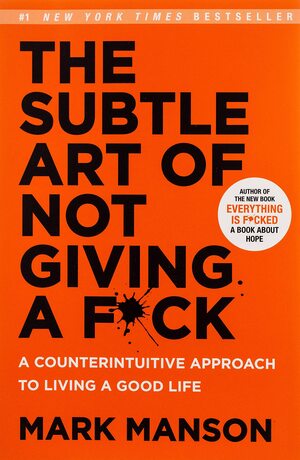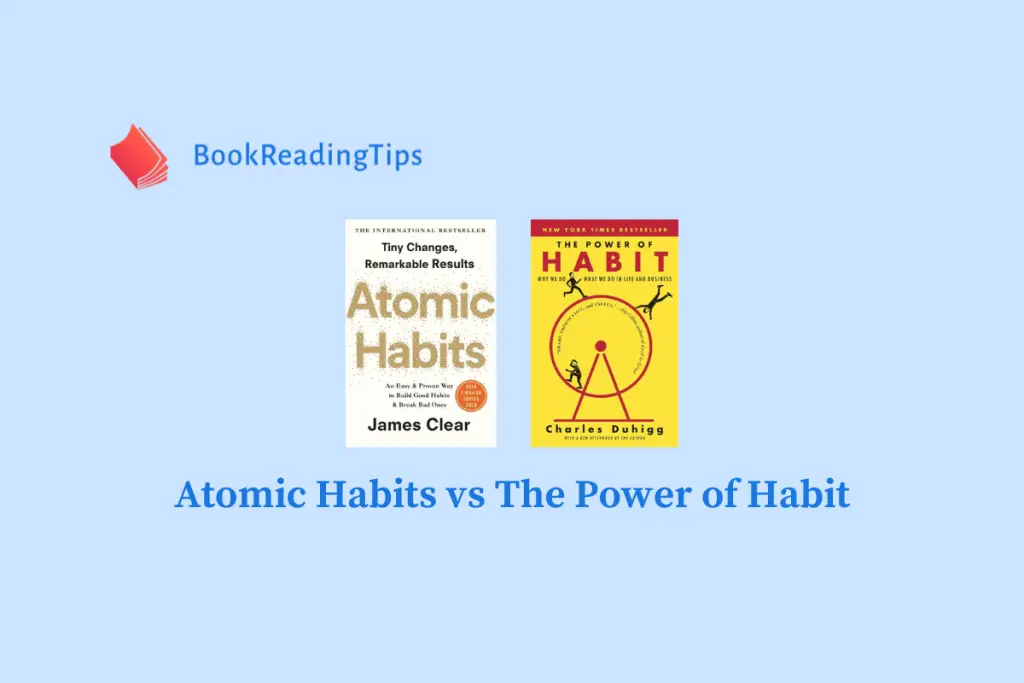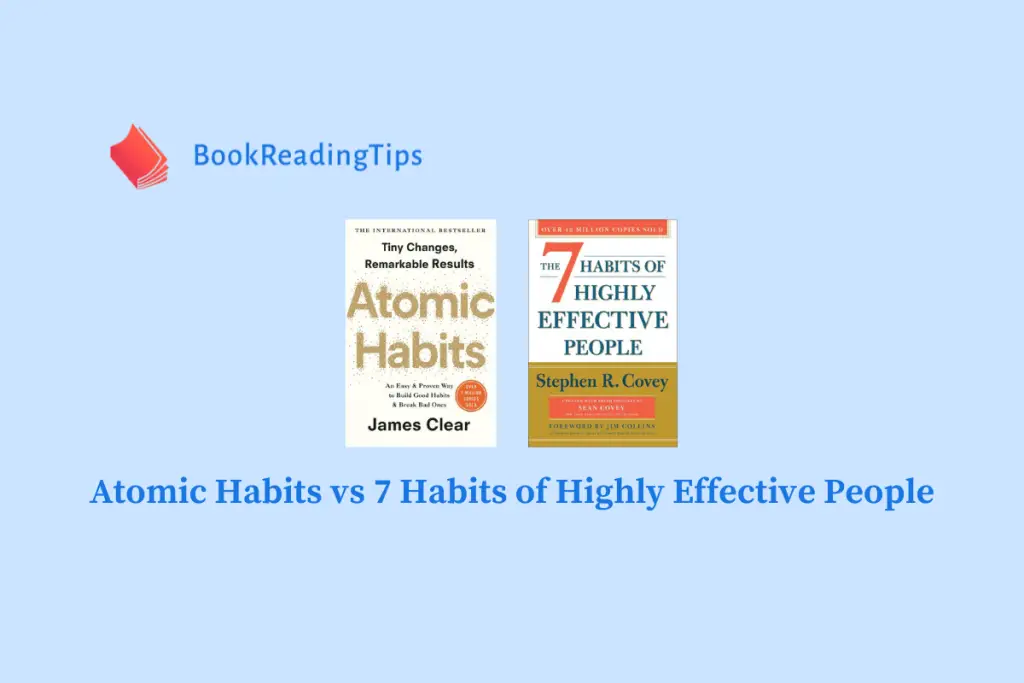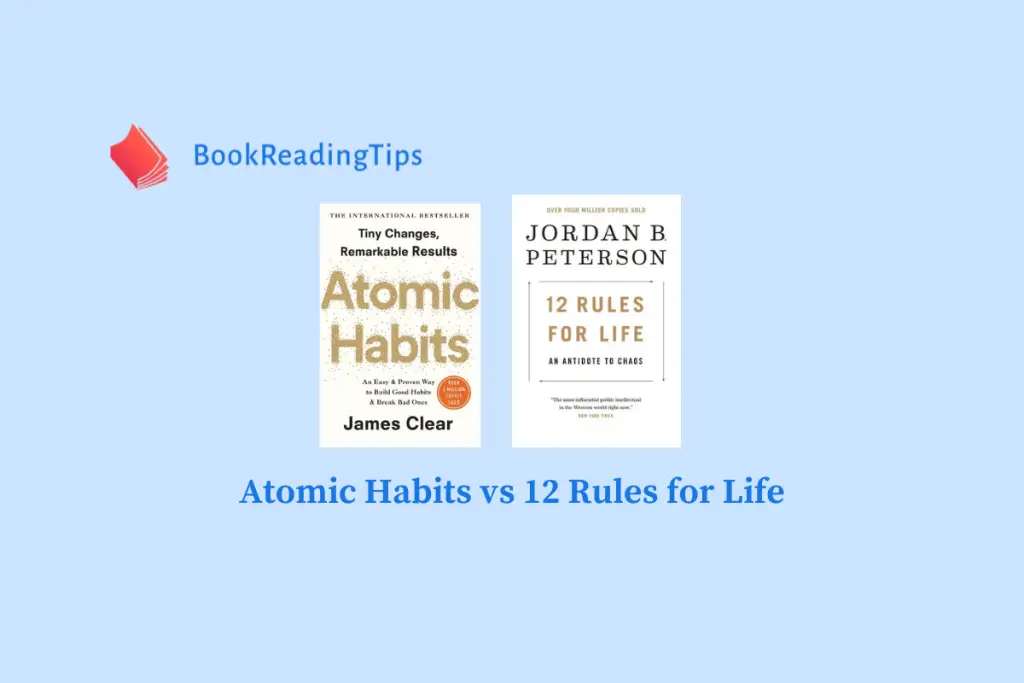In today’s fast-paced world, finding ways to improve ourselves and adopt better habits has become increasingly important. Two popular books, Atomic Habits by James Clear and The Subtle Art of Not Giving a F*ck by Mark Manson offer readers a chance to rethink their approach to personal development. Both books have made waves in the self-help community and provide unique perspectives on how to live our best lives.
As you delve into these books, you’ll discover that Atomic Habits focuses on the power of small, incremental changes and the importance of creating systems to support your personal growth. On the other hand, The Subtle Art of Not Giving a F*ck encourages you to prioritize what truly matters and to let go of the unimportant concerns in your life. Each book offers valuable insights that can help you make meaningful transformations in various aspects of your life.
In this article, you will explore the main concepts and principles from both books, compare their respective philosophies, and consider which approach might be more suitable for your own personal growth journey.
Table of Contents
- Atomic Habits vs The Subtle Art of Not Giving a F*ck: Overview
- Key Principles in Atomic Habits
- Key Principles in The Subtle Art of Not Giving a F*ck
- Comparison: Approaches and Techniques
- Strengths and Weaknesses of Both Books
- Practical Applications and Examples
- Conclusion: Choosing the Right Book for You
Atomic Habits vs The Subtle Art of Not Giving a F*ck: Overview
When comparing Atomic Habits by James Clear and The Subtle Art of Not Giving a F*ck by Mark Manson, it’s important to keep in mind that both books tackle personal development from unique angles.
In Atomic Habits, James Clear focuses on the concept of making small, incremental changes to improve your overall life. This book emphasizes the importance of developing good habits while breaking bad ones. Clear provides practical strategies to help you systematically analyze and restructure your daily routines. By embracing the power of incremental change, you can achieve remarkable results in various aspects of your life.
On the other hand, The Subtle Art of Not Giving a F*ck explores the idea of prioritizing what truly matters in your life by learning to not care about trivial matters. Mark Manson encourages you to embrace the struggles and challenges you face, as they are important for personal growth. Manson’s book is more about shifting your mindset and placing your focus on what truly matters, instead of worrying about irrelevant issues.
While both books provide valuable insights, they do so through different approaches. Atomic Habits is more focused on actionable steps and techniques for optimizing your routines, while The Subtle Art of Not Giving a F*ck is centered around a mental paradigm shift. As you delve into each book’s content, think about how the concepts presented can be applied to your own life based on your specific goals and personal development journey.
Key Principles in Atomic Habits

Habit Formation
In James Clear’s book Atomic Habits, you will learn about the importance of small, incremental changes that lead to long-lasting improvements. The author encourages the formation of good habits through a systematic approach called the “4 laws of atomic habits”:
- Make it obvious – Design your environment to present cues that trigger your new habit.
- Make it attractive – Develop an appealing mental image or motivation to help you perform the habit.
- Make it easy – Simplify the process to reduce the inertia to start the habit.
- Make it satisfying – Give yourself an immediate reward to reinforce the habit.
By adhering to these laws, you can establish new habits and set yourself up for compound growth.
Habit Stacking
Another useful technique presented in Atomic Habits is “habit stacking”. The idea behind this concept is to take advantage of habits you already have and use them as an anchor for new habits. You can create a chain of habits by pairing a new habit with an existing one, making it easier for you to incorporate the new habit into your routine. The formula for habit stacking is:
After [current habit], I will [new habit].For example, if you already have a habit of drinking coffee in the morning, you could stack a new habit of meditating for 5 minutes after finishing your coffee.
Environment Design
Lastly, Atomic Habits emphasizes the importance of environment design in habit formation. Your surroundings play a significant role in shaping your behavior, and by consciously designing your environment, you can make it easier to build good habits and break bad ones.
To make good habits more appealing and effortless, you can:
- Keep visual cues of your desired habits in plain sight, like placing your workout clothes next to your bed.
- Create designated spaces for your habits, like setting up a specific nook for reading or a designated area for exercise.
On the other hand, make bad habits less attractive and difficult by:
- Hiding or removing temptations, such as keeping unhealthy snacks out of sight.
- Introducing barriers to discourage undesired behavior, like placing your phone in a different room while working or studying.
By following these principles, you can create an environment that naturally steers you towards healthier and more productive habits.
Key Principles in The Subtle Art of Not Giving a F*ck

Values and Priorities
In The Subtle Art of Not Giving a F*ck, one of the main ideas is focusing on what truly matters to you. It’s important to choose values that are within your control and prioritize those. By doing this, you can eliminate unnecessary stress and anxiety in your life. Remember, it’s not about being indifferent; rather, it’s about being comfortable with the differences in your life.
The Feedback Loop from Hell
Another principle in this book is understanding the concept of the Feedback Loop from Hell. This refers to when you overthink or worry about a situation, which then leads to more stress and anxiety. By learning to not give a f**k about these unimportant situations, you can break this cycle and find inner peace. Instead of letting negative feelings control you, embrace the fact that it’s okay to feel a certain way and focus on what truly matters.
Responsibility and Control
Taking responsibility for your actions and feelings is a major theme in The Subtle Art of Not Giving a F*ck. Recognize that it’s up to you to determine how you react to situations and the emotions you experience. By understanding that you have control over your own feelings, you can choose how to respond and let go of the need for validation from others. Remember, it’s important to care about something more important than adversity, which will enable you to not give a f**k about unimportant things and concentrate on what truly matters.
Comparison: Approaches and Techniques
In Atomic Habits by James Clear, you’ll find an emphasis on developing small, incremental changes to improve your life. This book focuses on building good habits and breaking bad ones by making them obvious, attractive, easy, and satisfying. The approach is practical, and the techniques involve setting systems for habit formation, tracking progress, and finding creative ways to reinforce positive behavior.
On the other hand, The Subtle Art of Not Giving a F*ck by Mark Manson takes a different route in promoting self-improvement. Instead of focusing on habits, this book emphasizes finding meaning through what you deem important and only engaging in values that you can control. According to Manson, chasing values that are not under your control, such as popularity, leads to negative outcomes and a lack of personal growth.
While both books aim to help you improve your life, their methodologies differ:
- Atomic Habits:
- Small, incremental changes
- Focused on habit formation and breaking bad habits
- Techniques involve setting systems, tracking, and reinforcement
- The Subtle Art of Not Giving a F*ck:
- Finding meaning through personal values
- Identifying and engaging only in values that you can control
- Advocates for embracing difficulties and understanding the limits of positivity
In essence, Atomic Habits encourages you to refine your daily routine and behaviors to achieve success, while The Subtle Art of Not Giving a F*ck inspires you to redefine your values and focus on what truly matters. Both books offer valuable insights, but their approaches cater to different preferences in self-development and personal growth.
Strengths and Weaknesses of Both Books
In comparing Atomic Habits by James Clear and The Subtle Art of Not Giving a F*ck by Mark Manson, it’s essential to consider the strengths and weaknesses of each book to help you decide which one might be better suited to your needs.
Atomic Habits focuses on small, incremental changes that can have profound effects on your life. By implementing practical techniques, you can create lasting habits that align with your values and long-term goals. The book breaks down habit formation into simple, actionable steps, making it a valuable resource for those who want a structured and methodical approach to improving their lives.
On the other hand, one potential weakness is that it might be too focused on systems and routines. If you’re someone who prefers a more flexible, philosophical perspective, Atomic Habits might feel a bit rigid.
The Subtle Art of Not Giving a F*ck, on the contrary, emphasizes the importance of prioritizing your values and identifying areas where you may be unnecessarily stressing over trivial matters. Manson’s blunt writing style and humor make the book approachable and relatable, offering insights into embracing the inevitable struggles of life and achieving personal growth that aligns with your values.
However, the book’s biggest weakness could be the lack of actionable steps and practical advice when compared to Atomic Habits. If you’re looking for a step-by-step guide on how to improve specific habits, you might feel unsatisfied with the broader, more philosophical approach presented in this book.
Ultimately, choosing between Atomic Habits or The Subtle Art of Not Giving a F*ck depends on your preference for a practical, structured approach versus a value-driven, philosophical one. Both books offer valuable perspectives on personal growth, making them worthwhile options for your self-improvement journey.
Practical Applications and Examples
Implementing Atomic Habits in Daily Life
Implementing Atomic Habits in your daily life can lead to remarkable results. Focus on taking small, incremental steps in order to make lasting changes. Here are a few examples:
- Start with a small habit: If you want to begin exercising, start with just five minutes of walking each day. Gradually increase the duration as the habit becomes more ingrained.
- Use habit stacking: Connect a new habit to an existing one. For example, if you want to start drinking more water, you can tie it to brushing your teeth in the morning – after brushing, drink a glass of water.
- Set up your environment for success: Organize your space to encourage positive habits. If you want to eat healthier, keep fruits and veggies visible and easy to access while hiding unhealthy snacks.
Don’t forget to track your progress and celebrate small wins. This will help you maintain consistency and stay motivated.
Applying The Subtle Art Principles
The Subtle Art of Not Giving a F*ck encourages you to focus on what truly matters in your life and let go of superficial concerns. Here are some practical applications:
- Choose your values: Identify what’s truly important to you and base your actions and decisions on those values. This can help you prioritize what deserves your time and energy.
- Accept responsibility: Recognize that you are responsible for your own emotions, reactions, and choices. This empowers you to take control of your life instead of placing blame on external factors.
- Embrace uncertainty and discomfort: Acknowledge that life is uncertain, and discomfort is a natural part of growth. By embracing these inevitabilities, you can better navigate challenges and setbacks.
Keep in mind that adopting these principles does not mean you shouldn’t care about anything. It’s about focusing on what truly matters to you and letting go of unimportant concerns that hold you back.
Conclusion: Choosing the Right Book for You
When deciding between Atomic Habits and The Subtle Art of Not Giving a F*ck, it’s essential to consider your personal goals and preferences.
If you’re looking to improve your daily routines and develop productive habits, Atomic Habits is the right choice. The book focuses on building a system to create and maintain good habits, and it offers practical advice on how to make small, sustainable changes that can lead to significant improvements in your life.
On the other hand, if you’re seeking a shift in mindset and perspective to help you cope with life’s challenges, The Subtle Art of Not Giving a F*ck is for you. This book teaches you how to become more resilient and embrace the uncertainties of life while focusing on what truly matters to you.
Consider your learning style as well. Atomic Habits is based on scientific research and offers actionable steps to achieve your goals. If you enjoy practical, step-by-step instructions, this book will resonate with you.
The Subtle Art of Not Giving a F*ck, meanwhile, is written in a conversational tone, with relatable stories sprinkled throughout. If you prefer a book that reads like a chat with a friend and offers thought-provoking insights, this one might be more appealing to you.
Lastly, think about your immediate needs. If you’re at a stage in your life where building better habits is a priority, Atomic Habits should take precedence. If you’re looking to adjust your mindset and find clarity amid turmoil, The Subtle Art of Not Giving a F*ck is better suited for your situation.
Remember, the best book for you is the one that addresses your unique needs and preferences. Reflect on what you hope to gain from your reading experience, and choose the book that aligns with those ambitions.




